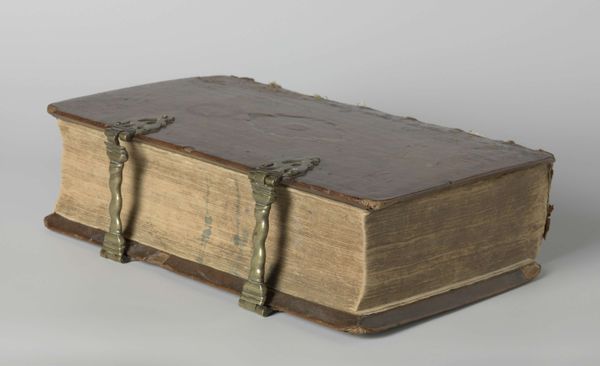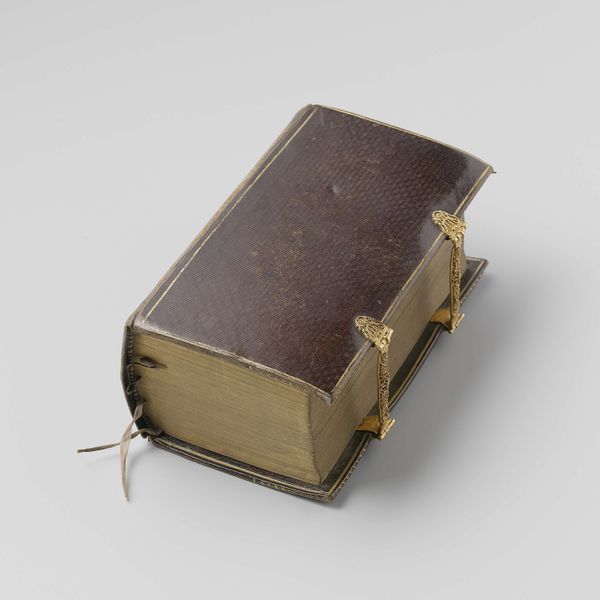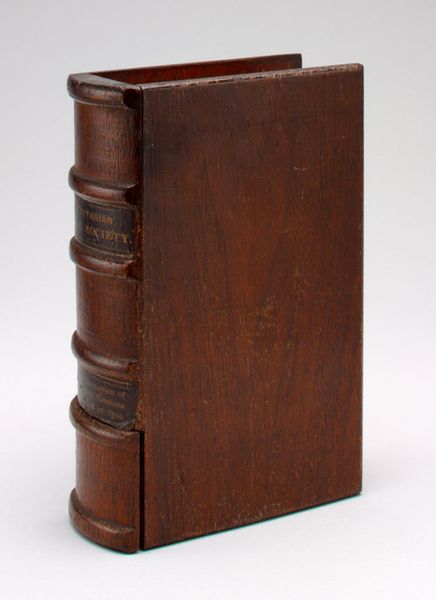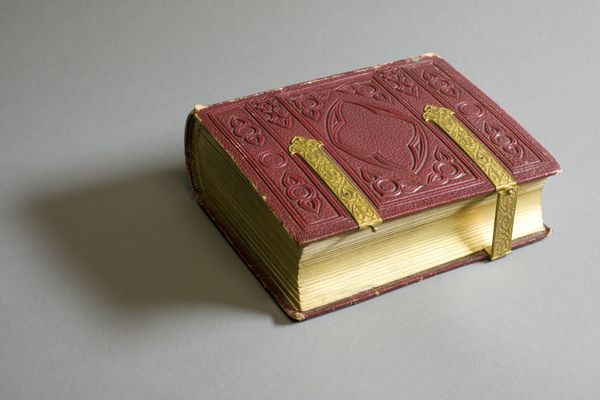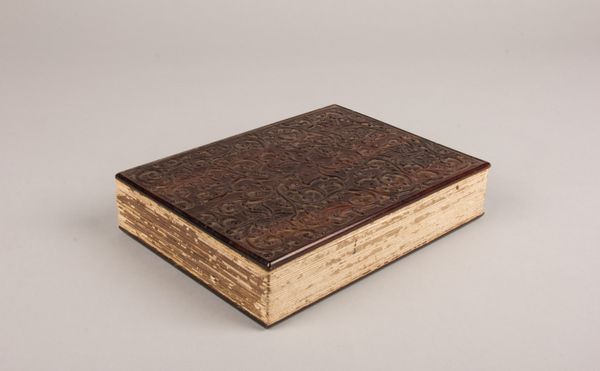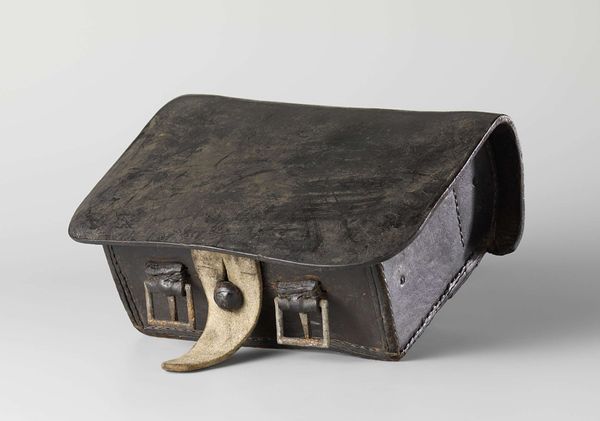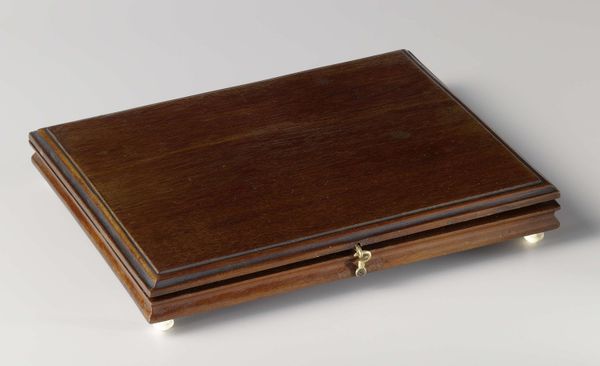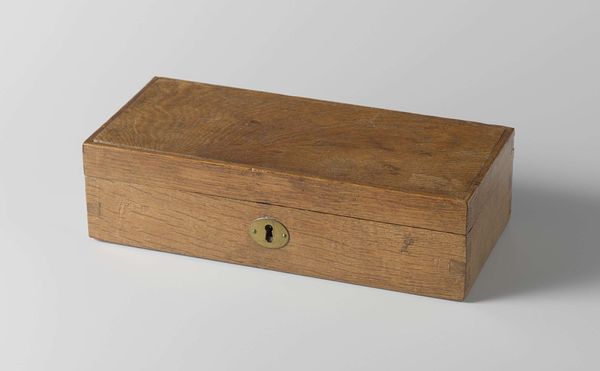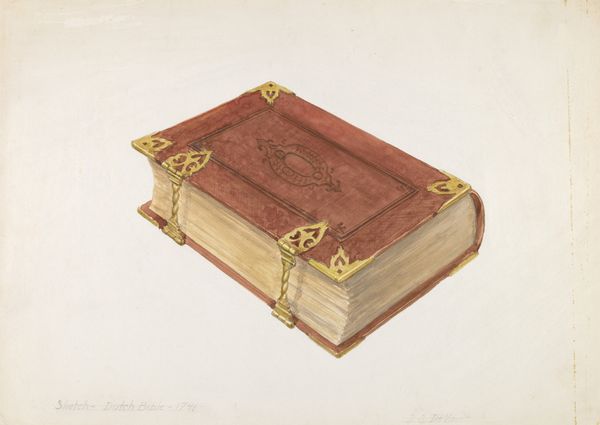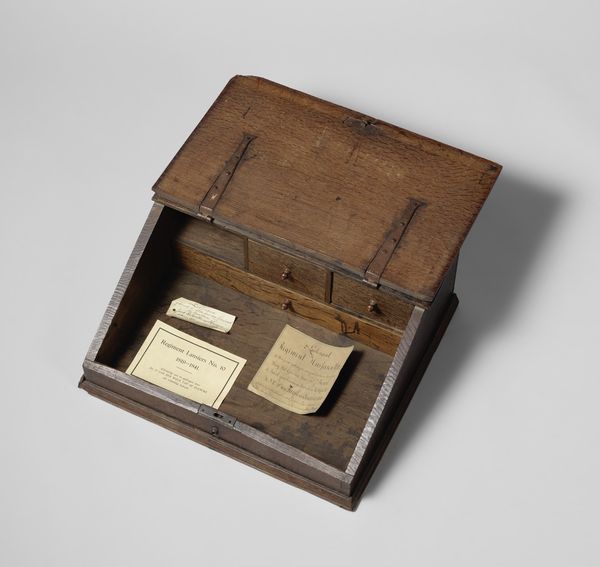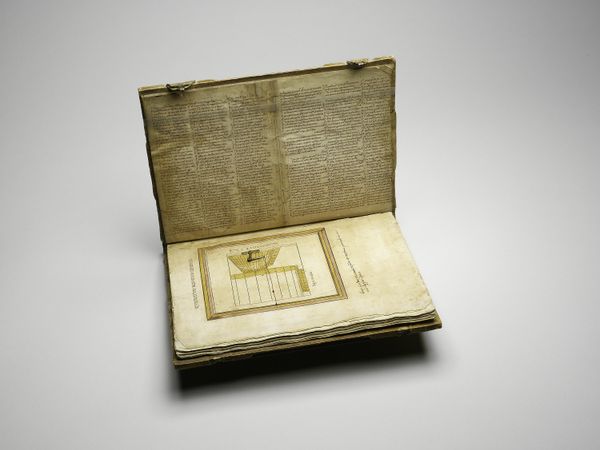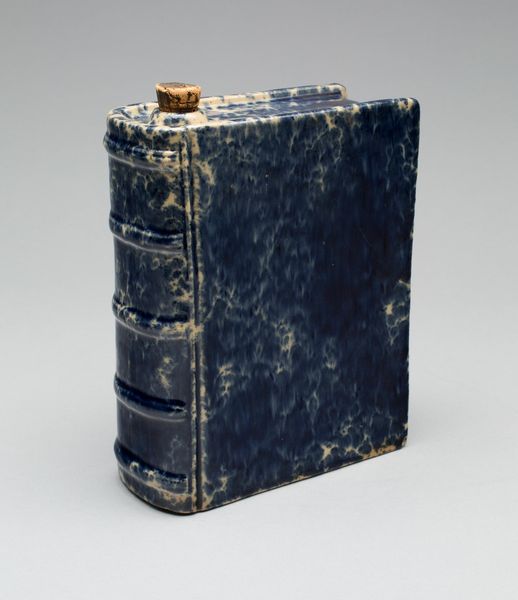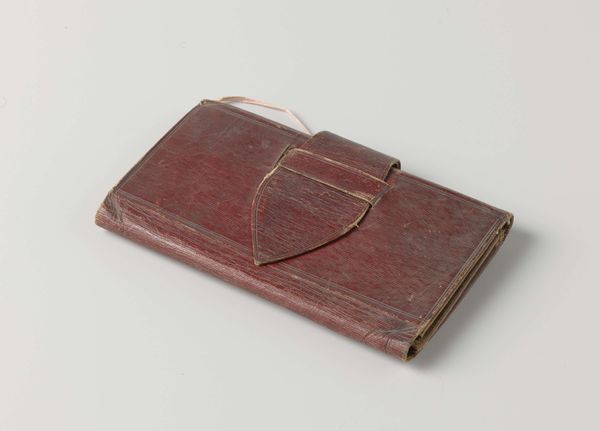
silver, paper
#
silver
#
book
#
paper
#
decorative-art
Dimensions: 11.7 × 7.3 × 3.8 cm (4 5/8 × 2 3/4 × 1 5/8 in.)
Copyright: Public Domain
Curator: Our next piece is a beautiful "Book with clasp," dated 1816. Crafted from paper and silver, it resides here at The Art Institute of Chicago. Editor: It appears so sturdy, almost secretive. It evokes a strong sense of history, of bearing witness to events long past. I find the simple rectangular form very pleasing, and the tarnished silver clasp adds such a charming, weathered detail. Curator: Books in this era were certainly more than mere objects; their content, production, and circulation were highly regulated by the church and state, thus directly participating in historical change and shaping societal knowledge. Editor: Yes, I can definitely see the echoes of the power structures you mentioned, inherent within it. What kind of a text was deemed important enough to warrant such a protective binding? Was it religious, political? Or something far more radical? Curator: Those are some truly fascinating considerations. At the time of its creation, the content of the book would often reflect a dialogue or perhaps tension between established power, religious dogma, and evolving cultural values. Its imagery, binding and decoration acted as powerful symbolic tools that bolstered societal perceptions, norms and narratives. Editor: Absolutely. Now looking at the way time has worn the leather down around its edges, it lends it a very tangible quality. If this book could speak, imagine the insights it could share from the historical contexts surrounding its journey through time. It definitely prompts so many questions about access, censorship, and privilege. Curator: Indeed, by closely examining such cultural artifacts we can actually challenge and reconsider long-held notions of the past and their continuing impact today. I encourage visitors to observe the “Book with clasp” with these questions in mind, and think critically about what stories it might have to tell us. Editor: Thank you. The conversation itself offers us all the chance to become better custodians of this shared cultural memory.
Comments
No comments
Be the first to comment and join the conversation on the ultimate creative platform.
